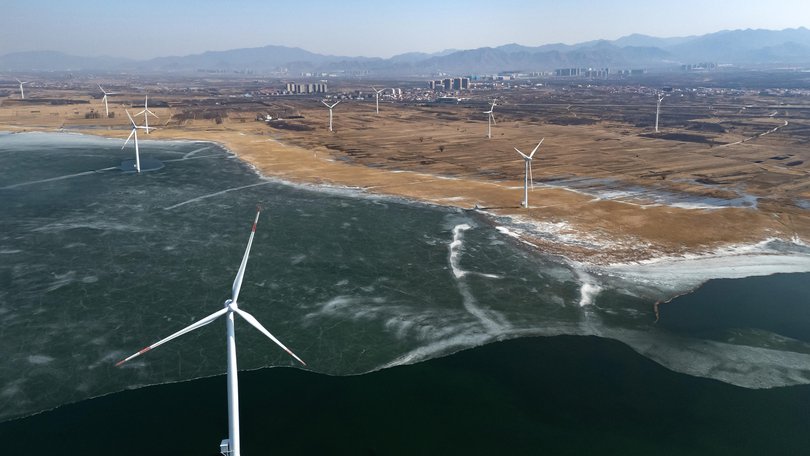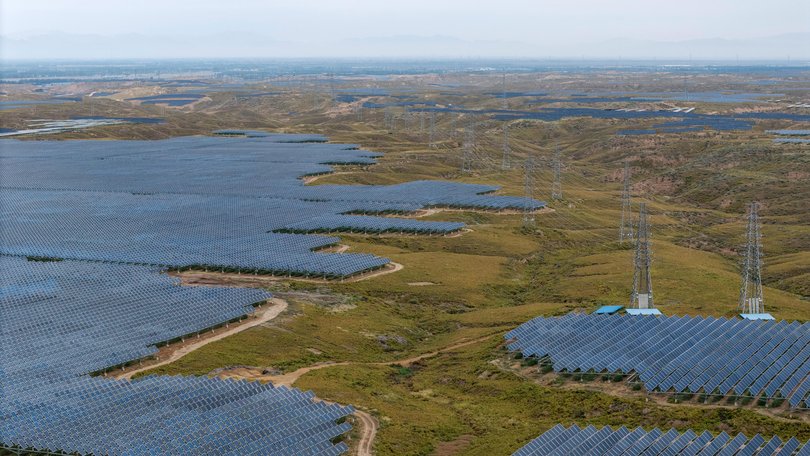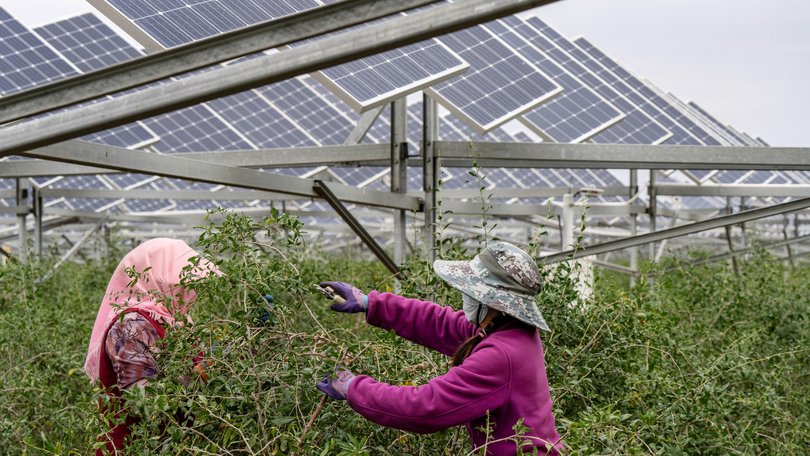THE ECONOMIST: China’s clean-energy revolution is remaking global markets and the balance of power

The scale of the renewables revolution in China is almost too vast for the human mind to grasp.
By the end of last year, the country had installed 887 gigawatts of solar-power capacity — close to double Europe’s and America’s combined total.
The 22m tonnes of steel used to build new wind turbines and solar panels in 2024 would have been enough to build a Golden Gate Bridge on every working day of every week that year.
Sign up to The Nightly's newsletters.
Get the first look at the digital newspaper, curated daily stories and breaking headlines delivered to your inbox.
By continuing you agree to our Terms and Privacy Policy.China generated 1,826 terawatt-hours of wind and solar electricity in 2024 — five times more than the energy contained in all 600 of its nuclear weapons.
In the context of the Cold War, the distinctive measure of a “superpower” was the combination of a continental span and a world-threatening nuclear arsenal.
The coming-together of China’s enormous manufacturing capacity and its ravenous appetite for copious, cheap, domestically produced electricity deserves to be seen in a similar world-changing light.

They have made China a new type of superpower — one which deploys clean electricity on a planetary scale.
As a consequence, China is reshaping the world’s energy outlook, its geopolitics and its capacity to limit the catastrophic effects of climate change.
The main reason countries have yet to decarbonise their economies is because they lack the means to do so. And that is what China is fixing.
It is providing ever greater amounts of clean-energy capacity to the world at prices cheaper than any alternative, including coal and natural gas.
China can produce almost a terawatt of renewable-energy capacity in a year — enough to supply as much energy as more than 300 big nuclear-power plants.
And the dynamic that created all this generating capacity is far from exhausted.
China’s huge demand — it generates a third of the world’s electricity — is being met by ever more efficient production which makes the end product cheaper and cheaper. This, in turn, allows it to meet even more demand, and so on.
The subsidies that started to turn this virtuous circle are increasingly beside the point; indeed, many are being withdrawn.
Thanks to this capacity — and a tendency to set itself easy targets — China has exceeded, or is on course to exceed, most of the pledges it has made under the UN Framework Convention on Climate Change since signing the Paris Agreement ten years ago.
The politicians, negotiators, lobby groups and hangers-on gathering in Brazil for the 30th UNFCCC’s COP summit will do so in a context shaped by China’s latest pledges to more than double the country’s renewable-energy capacity and make a modest but quantified cut in emissions by 2035. Both targets may well be exceeded.
As important, China is exporting its revolution to the rest of the world. America’s current government rejects renewable technologies. In Europe, industry is hollowing out and voters are rebelling against expensive green policies.
But it is in developing countries that the fight against climate change will be won or lost — and it is there that Chinese renewables will make the most difference. China is now making more money from exporting green technology than America makes from exporting fossil fuels.
This trend will continue simply because renewables are cheap; if you doubt the appeal, count the solar panels on Pakistani roofs.
The work China does on cutting emissions at home — ever cheaper renewables, more abundant storage which makes those renewables more useful, better electricity markets, long transmission lines and all sorts of associated expertise — will thus be increasingly relevant, and sellable, beyond its borders.

This anti-emissions machine is powered by self-interest. More clean tech elsewhere lowers China’s own climate risks by reducing global emissions.At the same time, it brings economic benefits.
For many years, countries’ economic and climate interests have often been thought to diverge, encouraging a free-rider problem in which they seek the benefits of slowing climate change while dodging its costs.
Today, the economic and climate incentives of the world’s biggest manufacturer and many of its export markets are increasingly aligned.
The idea of a low-carbon future built on China’s industrial capacity brings worries. For one thing, China still seems unwilling to give up coal as quickly as it might.
If it committed itself more wholeheartedly to reshaping its grid infrastructure and its energy markets, and put a price on carbon emissions, it could move from renewables as an adjunct to the country’s coal-based system to renewables as the means of its demise.
For the rest of the world, the concern is security. Single-party China, under the unfettered leadership of Xi Jinping, is repressive at home and ruthlessly self-serving abroad.
The way in which it exploits its advantages — such as those in the supply of rare earths and other critical minerals — makes the prospect of relying on it for anything valuable a frightening one.
China can allay these worries by moving larger chunks of its manufacturing base and associated technology to companies it invests in elsewhere. Ensnaring poor countries in debt, as its Belt and Road Initiative has done in some places, only hurts its own commercial prospects.
But the anxieties of the fossil-fuel age — that someone, somewhere, will turn off the taps — do not apply to technologies which, once installed, produce power regardless of what their makers may have to say.
Solar cells cannot be suborned in the way that silicon chips might be.
Let the sunshine in
And the benefits could be enormous. Although the possibility of reducing greenhouse-gas emissions so dramatically as to limit the increase in global temperatures to just 1.5C — endorsed in Paris — now lies firmly in the past, solar and wind offer the best hope of limiting further rises.
And even if climate change is not your priority, you should be excited at the prospect of cheap, abundant clean energy and its promise to improve billions of lives in developing countries.
The world needs what China has to offer. It should take it.
Originally published as China’s clean-energy revolution will reshape markets and politics
